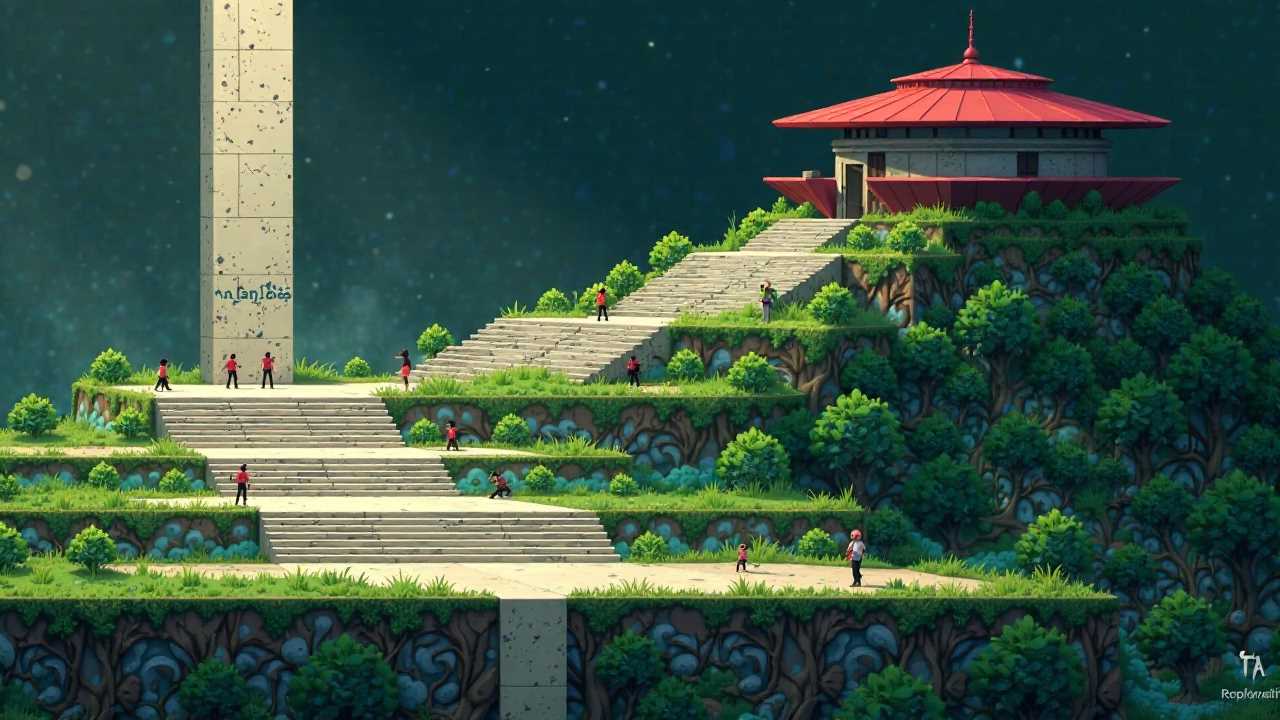
Understanding Digital Landscape Illustration
Digital Landscape Illustration is a captivating field that combines creativity with technology. It allows artists to create stunning visuals that can transport viewers to other worlds, evoke emotions, and tell stories. In this article, we will explore the fundamental aspects of Digital Landscape Illustration, including Digital Techniques, Art Tutorials, Creative Software, Visual Composition, Illustration Methods, and Design Principles.
Key Digital Techniques for Landscape Illustration
To excel in Digital Landscape Illustration, mastering various Digital Techniques is imperative. These techniques include layering, blending, and texturing, which help create depth and realism in your artwork.
Layering is a powerful technique that allows artists to build complex images by stacking multiple layers. Each layer can represent different elements of the landscape, such as the sky, mountains, and foreground. This method not only enhances the visual appeal but also provides flexibility in editing.
Blending techniques, such as using gradient tools and soft brushes, enable artists to create smooth transitions between colors and elements. This is particularly useful in landscapes where the sky meets the horizon or where shadows play across the terrain.
Texturing adds another dimension to your illustrations. By incorporating textures, artists can simulate various surfaces like rocky cliffs, grassy fields, or water reflections. Utilizing texture brushes or importing texture images can significantly elevate the quality of your artwork.
Art Tutorials to Enhance Your Skills
Engaging in Art Tutorials is an effective way to refine your skills in Digital Landscape Illustration. Many online platforms offer comprehensive tutorials that cover everything from basic techniques to advanced methods.
These tutorials often provide step-by-step instructions, allowing you to follow along and practice as you learn. Whether you are a beginner or an experienced artist, there is always something new to discover. Look for tutorials that focus on specific aspects, such as creating realistic skies, designing intricate landscapes, or mastering color theory.
Participating in online workshops or webinars can also provide valuable insights. These sessions often feature industry professionals who share their expertise and techniques, giving you a chance to learn from the best.
Choosing the Right Creative Software
Selecting the appropriate Creative Software is crucial for successful Digital Landscape Illustration. Several programs cater to different skill levels and artistic preferences.
Popular software options include Adobe Photoshop, Corel Painter, and Procreate. Each of these programs offers unique features that can enhance your workflow. For instance, Photoshop is renowned for its powerful editing tools and versatility, making it a favorite among digital artists. Corel Painter mimics traditional painting techniques, allowing artists to create more organic-looking illustrations. Procreate, on the other hand, is an excellent choice for those who prefer working on tablets, providing a user-friendly interface and a wide range of brushes.
When choosing software, consider your specific needs and the type of landscapes you wish to create. Many programs offer free trials, allowing you to experiment before making a commitment.
Mastering Visual Composition
Visual Composition is a fundamental principle in Digital Landscape Illustration. It involves arranging elements within your artwork to create a harmonious and engaging scene.
One of the key aspects of visual composition is the Rule of Thirds. This principle suggests dividing your canvas into a grid of nine equal parts and placing focal points along the grid lines or at their intersections. This technique helps create balance and draws the viewer's eye to important elements in the landscape.
Another important concept is leading lines, which guide the viewer's gaze through the artwork. These lines can be natural elements like rivers, roads, or pathways that lead to the focal point of the illustration.
Incorporating foreground, middle ground, and background layers adds depth to your composition. This technique creates a sense of space and invites viewers to explore the entire scene.
Exploring Illustration Methods
Different Illustration Methods can significantly impact the outcome of your Digital Landscape Illustration. Experimenting with various styles, such as realism, impressionism, or abstract, can help you find your unique voice as an artist.
Realism focuses on accurately depicting landscapes as they appear in nature. This method requires a keen eye for detail and a strong understanding of light and shadow.
Impressionism, on the other hand, emphasizes capturing the essence of a scene rather than its precise details. This method often involves using loose brush strokes and vibrant colors to convey mood and atmosphere.
Abstract illustration allows for more freedom and creativity. Artists can manipulate shapes, colors, and forms to create unique interpretations of landscapes, often evoking emotions and thoughts that transcend traditional representation.
Applying Design Principles for Stunning Visuals
Incorporating Design Principles into your Digital Landscape Illustration is vital for creating visually appealing artwork. Key principles include balance, contrast, emphasis, movement, pattern, rhythm, and unity.
Balance refers to the distribution of visual weight in your artwork. Achieving balance can be done through symmetrical or asymmetrical arrangements of elements.
Contrast enhances the visual interest by juxtaposing different elements, such as light and dark colors or smooth and rough textures. This principle can help highlight focal points and create depth.
Emphasis directs the viewer's attention to specific areas of the illustration. This can be achieved through color, size, or placement of elements.
Understanding these design principles will not only improve your technical skills but also elevate the overall quality of your Digital Landscape Illustrations.
Mastering Digital Landscape Illustration requires dedication and practice. By focusing on essential Digital Techniques, engaging with Art Tutorials, selecting the right Creative Software, understanding Visual Composition, exploring various Illustration Methods, and applying fundamental Design Principles, you can create stunning visuals that resonate with viewers. Embrace the journey of learning and experimentation, and let your creativity flourish in the vibrant world of digital art.
 Digital Art InstructionDIY Infographics DesignMobile Game ArtworkPersonalized Logo Design3D AnimationeBook Covers DesignPrivacy PolicyTerms And Conditions
Digital Art InstructionDIY Infographics DesignMobile Game ArtworkPersonalized Logo Design3D AnimationeBook Covers DesignPrivacy PolicyTerms And Conditions
